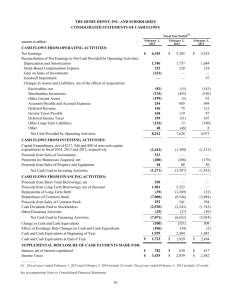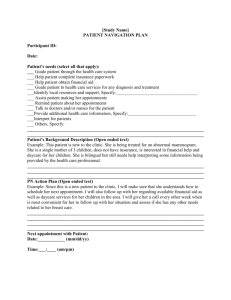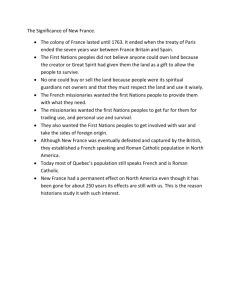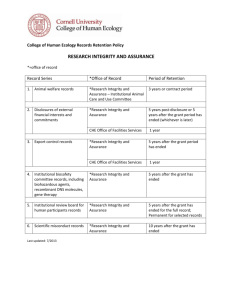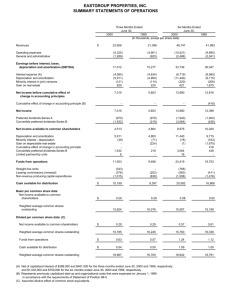1 Current Business Activities
advertisement
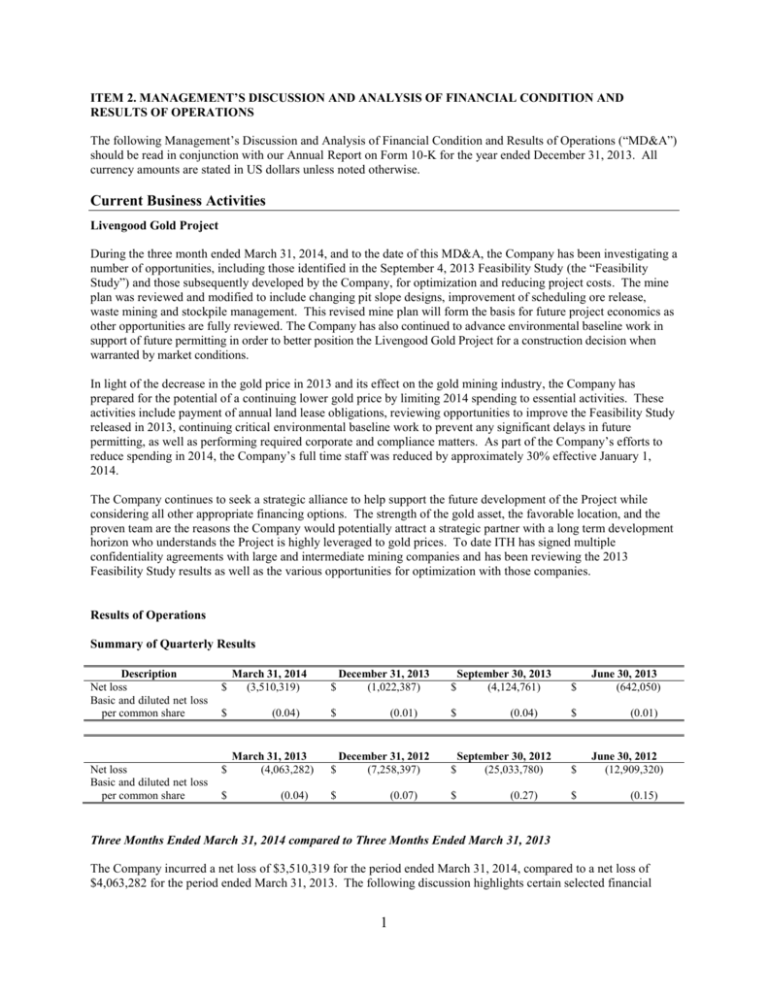
ITEM 2. MANAGEMENT’S DISCUSSION AND ANALYSIS OF FINANCIAL CONDITION AND RESULTS OF OPERATIONS The following Management’s Discussion and Analysis of Financial Condition and Results of Operations (“MD&A”) should be read in conjunction with our Annual Report on Form 10-K for the year ended December 31, 2013. All currency amounts are stated in US dollars unless noted otherwise. Current Business Activities Livengood Gold Project During the three month ended March 31, 2014, and to the date of this MD&A, the Company has been investigating a number of opportunities, including those identified in the September 4, 2013 Feasibility Study (the “Feasibility Study”) and those subsequently developed by the Company, for optimization and reducing project costs. The mine plan was reviewed and modified to include changing pit slope designs, improvement of scheduling ore release, waste mining and stockpile management. This revised mine plan will form the basis for future project economics as other opportunities are fully reviewed. The Company has also continued to advance environmental baseline work in support of future permitting in order to better position the Livengood Gold Project for a construction decision when warranted by market conditions. In light of the decrease in the gold price in 2013 and its effect on the gold mining industry, the Company has prepared for the potential of a continuing lower gold price by limiting 2014 spending to essential activities. These activities include payment of annual land lease obligations, reviewing opportunities to improve the Feasibility Study released in 2013, continuing critical environmental baseline work to prevent any significant delays in future permitting, as well as performing required corporate and compliance matters. As part of the Company’s efforts to reduce spending in 2014, the Company’s full time staff was reduced by approximately 30% effective January 1, 2014. The Company continues to seek a strategic alliance to help support the future development of the Project while considering all other appropriate financing options. The strength of the gold asset, the favorable location, and the proven team are the reasons the Company would potentially attract a strategic partner with a long term development horizon who understands the Project is highly leveraged to gold prices. To date ITH has signed multiple confidentiality agreements with large and intermediate mining companies and has been reviewing the 2013 Feasibility Study results as well as the various opportunities for optimization with those companies. Results of Operations Summary of Quarterly Results Description Net loss Basic and diluted net loss per common share Net loss Basic and diluted net loss per common share $ $ $ $ March 31, 2014 (3,510,319) (0.04) March 31, 2013 (4,063,282) (0.04) $ December 31, 2013 (1,022,387) $ $ (0.01) December 31, 2012 (7,258,397) $ (0.07) $ $ $ $ September 30, 2013 (4,124,761) (0.04) September 30, 2012 (25,033,780) (0.27) $ June 30, 2013 (642,050) $ (0.01) $ $ June 30, 2012 (12,909,320) (0.15) Three Months Ended March 31, 2014 compared to Three Months Ended March 31, 2013 The Company incurred a net loss of $3,510,319 for the period ended March 31, 2014, compared to a net loss of $4,063,282 for the period ended March 31, 2013. The following discussion highlights certain selected financial 1 information and changes in operations between the three months ended March 31, 2014 and the three months ended March 31, 2013. Mineral property expenditures decreased significantly to $615,162 for the three months ended March 31, 2014 from $2,794,435 for the three months ended March 31, 2013 primary due to the Company completing the Feasibility Study in 2013 and focusing on continuation of environmental baseline studies and reviewing Feasibility Study opportunities in 2014. Share-based payment charges were $618,582 during the three months ended March 31, 2014 compared to $1,578,028 during the three months ended March 31, 2013. The decrease in share-based payment charges during the period was mainly the result of a reduction in the fair value of options granted during the period and vesting of prior period grants along with certain forfeitures of options during 2014. The Company granted 2,480,000 options during the three months ended March 31, 2014 compared to 613,000 during the three months ended March 31, 2013. Share-based payment charges Share-based payment charges for the three month periods ended March 31, 2014 and 2013 were allocated as follows: Expense category: Consulting Investor relations Wages and benefits March 31, 2014 $ (64,083) 41,398 641,267 $ 618,582 March 31, 2013 $ 544,430 43,825 989,773 $ 1,578,028 Share-based payments to consultants decreased from $544,430 to a credit of $64,083 as a result of forfeitures of previously granted stock options to consultants. Excluding share-based payment charges of $641,267 and $989,773 respectively, wages and benefits for the period decreased to $607,388 during the three months ended March 31, 2014 from $887,191 during the three months ended March 31, 2013 as a result of decreased personnel during the period. As part of its reduced spending plan, the Company decreased its full-time staff by approximately 30% effective January 1, 2014. All other expense categories reflected moderate decreases period over period reflecting the Company’s efforts to reduce spending. Other items amounted to a loss of $1,199,070 during the three month period ended March 31, 2014 compared to a gain of $1,932,058 during the three month period ended March 31, 2013. The loss in the current period resulted mainly from an unrealized loss of $1.5 million on the revaluation of the derivative liability at March 31, 2014 resulting from an increase in the historical and estimated future average price of gold, compared to an unrealized gain of $1.5 million on the revaluation of the derivative liability during the prior period which resulted from a decrease in the average price of gold. Offsetting the unrealized loss on the derivative liability, the Company had foreign exchange gain of $284,129 during the three month period ended March 31, 2014 compared to a gain of $397,829 during the three month period ended March 31, 2013. The average exchange rate during the three month period ended March 31, 2014 was C$1 to US$0.906 compared to C$1 to US$0.992 for the three month period ended March 31, 2013. Liquidity and Capital Resources The Company has no revenue generating operations from which it can internally generate funds. To date, the Company’s ongoing operations have been predominantly financed through sale of its equity securities by way of private placements and the subsequent exercise of share purchase and broker warrants and options issued in connection with such private placements. However, the exercise of warrants/options is dependent primarily on the market price and overall market liquidity of the Company’s securities at or near the expiry date of such warrants/options (over which the Company has no control) and therefore there can be no guarantee that any existing warrants/options will be exercised. 2 As at March 31, 2014, the Company reported cash and cash equivalents of $11,379,547 compared to $13,925,601 at December 31, 2013. The decrease of approximately $2.5 million resulted from corporate expenditures and expenditures on the Livengood Gold Project for continuation of environmental baseline activities and review of project opportunities of $1.4 million, payment of severance liabilities of $0.6 million, and the effect of foreign exchange on cash of $0.5 million. The Company continues to utilize its cash resources to fund the Livengood Gold Project environmental activities required for preservation of baseline database and future permitting, Feasibility Study recommendations, including related mine planning and other project improvements, as well as corporate administrative requirements. Investing activities during the three months ended March 31, 2014 comprised solely the change in restricted cash and capitalized acquisition costs related to land acquisitions closed in January 2014. The Company had no investing activities during the three months ended March 31, 2013. The Company had no cash flows from financing activities during the three month periods ended March 31, 2014 and 2013. As at March 31, 2014, the Company had working capital of $10,860,906 compared to working capital of $12,699,227 at December 31, 2013. The Company expects that it will operate at a loss for the foreseeable future, but believes the current cash and cash equivalents will be sufficient for it to complete the non-discretionary activities at the Livengood Gold Project and its currently anticipated general and administrative costs, through the 2014 fiscal year and well into 2015. To advance the Livengood Gold Project towards permitting and development, the Company anticipates maintaining certain essential development activities for the current fiscal year ending December 31, 2014. These essential activities include maintaining environmental baseline data that in its absence could materially delay future permitting of the Livengood Gold Project. The Company anticipates spending approximately $8 million during fiscal year 2014 to maintain the environmental baseline activity, review opportunities, including those identified in the Feasibility Study and those subsequently developed by the Company, as well as perform required general and administrative duties. As at March 31, 2014 the Company has spent approximately $1.4 million on the aforementioned activities. As part of the Company’s reduced spending plan, ITH reduced its full-time staff by approximately 30% effective January 1, 2014. The Company will require significant additional financing to continue its operations (including general and administrative expenses) in connection with post-Feasibility Study activities at the Livengood Gold Project and the development of any mine that may be determined to be built at the Livengood Gold Project, and there is no assurance that the Company will be able to obtain the additional financing required on acceptable terms, if at all. In addition, any significant delays in the issuance of required permits for the ongoing work at the Livengood Gold Project, or unexpected results in connection with the ongoing work, could result in the Company being required to raise additional funds to advance permitting efforts. The Company’s review of its financing options includes pursuing a future strategic alliance to assist in further development, permitting and future construction costs. Despite the Company’s success to date in raising significant equity financing to fund its operations, there is significant uncertainty that the Company will be able to secure any additional financing in the current or future equity markets. See “Risk Factors – We will require additional financing to fund exploration and, if warranted, development and production. Failure to obtain additional financing could have a material adverse effect on our financial condition and results of operation and could cast uncertainty on our ability to continue as a going concern.” The quantity of funds to be raised and the terms of any proposed equity financing that may be undertaken will be negotiated by management as opportunities to raise funds arise. Specific plans related to the use of proceeds will be devised once financing has been completed and management knows what funds will be available for these purposes. Due to this uncertainty, if the Company is unable to secure additional financing, it may be required to reduce all discretionary activities at Livengood to preserve its working capital to fund anticipated non-discretionary expenditures beyond the 2014 fiscal year. Other than cash held by its subsidiaries for their immediate operating needs in Alaska and Colorado, all of the Company’s cash reserves are on deposit with a major Canadian chartered bank. The Company does not believe that the credit, liquidity or market risks with respect thereto have increased as a result of the current market conditions. However, to achieve greater security for the preservation of its capital, the Company has, of necessity, been required to accept lower rates of interest which has also lowered its potential interest income. 3 Contractual Obligations The following table discloses, as of March 31, 2014, the Company’s contractual obligations including anticipated mineral property payments and work commitments and committed office and equipment lease obligations. Under the terms of the Company’s mineral property purchase agreements, mineral leases and the terms of the unpatented mineral claims held by it, the Company is required to make certain scheduled acquisition payments, incur certain levels of expenditures, make lease or advance royalty payments, make payments to government authorities and incur assessment work expenditures as summarized in the table below in order to maintain and preserve the Company’s interests in the related mineral properties. If the Company is unable or unwilling to make any such payments or incur any such expenditures, it is likely that the Company would lose or forfeit its rights to acquire or hold the related mineral properties. The following table assumes that the Company retains the rights to all of its current mineral properties, but no other lease purchase or royalty buyout options: Payments Due by Year 2014 Livengood Property Purchase(1) Mineral Property Leases $ (2) 2015 - $ 2016 2017 - $ 16,300,000 $ 2019 and beyond 2018 - $ - $ Total - $ 16,300,000 366,236 405,979 410,794 415,681 425,641 430,676 2,455,007 Mining Claim Government Fees 89,110 89,110 89,110 89,110 89,110 89,110 534,660 Office and Equipment Lease Obligations 168,806 78,960 362 362 362 362 249,214 Total $ 624,152 1. 2. $ 574,049 $ 16,800,266 $ 505,153 $ 515,113 $ 520,148 $ 19,538,881 The amount payable in December 2016 of $16,300,000 represents the fair value of the Company’s derivative liability as at March 31, 2014 and will be revalued at each subsequent reporting period. Does not include required work expenditures, as it is assumed that the required expenditure level is significantly below the work for which will actually be carried out by the Company. Does not include potential royalties that may be payable (other than annual minimum royalty payments). Off-Balance Sheet Arrangements The Company does not have any off balance sheet arrangements. Environmental Regulations The operations of the Company may in the future be affected from time to time in varying degrees by changes in environmental regulations, including those for future removal and site restoration costs. Both the likelihood of new regulations and their overall effect upon the Company vary greatly and are not predictable. The Company’s policy is to meet or, if possible, surpass standards set by relevant legislation by application of technically proven and economically feasible measures. Certain U.S. Federal Income Tax Considerations for U.S. Holders The Company has been a “passive foreign investment company” (“PFIC”) for U.S. federal income tax purposes in recent years and expects to continue to be a PFIC in the future. Current and prospective U.S. shareholders should consult their tax advisors as to the tax consequences of PFIC classification and the U.S. federal tax treatment of PFICs. Additional information on this matter is included in the Company’s Annual Report on Form 10-K for the year ended December 31, 2013, under “Part II. Item 5. Market for Registrant’s Common Equity, Related 4 Stockholder Matters and Issuer Purchases of Equity Securities - Certain U.S. Federal Income Tax Considerations for U.S. Holders.” 5 ITEM 3. QUANTITATIVE AND QUALITATIVE DISCLOSURES ABOUT MARKET RISK The Company has exposure to market risk in areas of interest rate risk, foreign currency exchange rate risk, and other price risk. Interest Rate Risk Interest rate risk consists of the risk that the fair value or future cash flows of a financial instrument will fluctuate because of changes in market interest rates. The Company’s cash and cash equivalents consists of cash and cash equivalents held in bank accounts and short term deposit certificates or Guaranteed Investment Certificates with a major Canadian financial institution that earn interest at variable interest rates. Future cash flows from interest income on cash and cash equivalents will be affected by interest rate fluctuations. Due to the short-term nature of these financial instruments, fluctuations in market rates do not have a significant impact on estimated fair values. At March 31, 2014, the Company held a total of $9,996,098 in cash equivalents which consist of interest saving accounts and Guaranteed Investment Certificates. The Company manages interest rate risk by maintaining an investment policy that focuses primarily on preservation of capital and liquidity. The Company’s sensitivity analysis suggests that a 0.5% change in interest rates would affect interest income by approximately $20,000. Foreign Currency Risk The Company is exposed to foreign currency risk to the extent that certain monetary financial instruments and other assets are denominated in Canadian dollars. As the majority of the Company’s assets, aside from cash, are denominated in US dollars, currency risk is limited to those Canadian cash balances. The Company has not entered into any foreign currency contracts to mitigate this risk. The Company’s sensitivity analysis suggests that a consistent 7.5% change in the absolute rate of exchange for the Canadian dollar would affect net assets by approximately $340,000. Furthermore, depending on the amount of cash held by the Company in Canadian dollars at the end of each reporting period using the period end exchange rate, significant changes in the exchange rates could cause significant changes to the currency translation amounts recorded to accumulated other comprehensive income. As at March 31, 2014, USD amounts were converted at a rate of C$1 to US $0.9047. Credit Risk Concentration of credit risk exists with respect to the Company’s Canadian cash and cash equivalents as all amounts are held at a major Canadian financial institution. Credit risk with regard to cash held in the United States is mitigated as the amount held in the United States is only sufficient to cover short-term requirements. With respect to receivables at March 31, 2014, the Company is not exposed to significant credit risk as the receivables are principally interest accruals. Other Price Risk Other price risk is the risk that the fair value or future cash flows of a financial instrument will fluctuate because of changes in market prices, other than those arising from interest rate risk or foreign exchange risk. The Company’s investments in marketable securities are exposed to such risk. The Company’s derivative liability, which consists of a future contingent payment valued using historic and estimated future gold prices, is also exposed to other price risk. See Note 6 of the notes to the unaudited condensed consolidated interim financial statements included elsewhere in this Quarterly Report on Form 10-Q. The fair value of this liability will fluctuate with the average daily price of gold as well as with future projections for the average price of gold over the life of the obligation. For every dollar change in the average daily price of gold, the value of the derivative liability will change by $23,148. 6 ITEM 4. CONTROLS AND PROCEDURES Disclosure Controls and Procedures As of March 31, 2014, an evaluation was carried out under the supervision of and with the participation of the Company’s management, including the Chief Executive Officer (the principal executive officer) and Chief Financial Officer (the principal financial officer and accounting officer), of the effectiveness of the design and operation of the Company’s disclosure controls and procedures (as defined in Rules 13a-15(e) and 15d-15(e) of the Exchange Act). Based on the evaluation, the Chief Executive Officer and the Chief Financial Officer have concluded that, as of March 31, 2014, the Company’s disclosure controls and procedures were effective in ensuring that: (i) information required to be disclosed in reports filed or submitted to the SEC under the Exchange Act is recorded, processed, summarized and reported within the time periods specified in applicable rules and forms and (ii) accumulated and communicated to management, including the Chief Executive Officer and Chief Financial Officer, in a manner that allows for timely decisions regarding required disclosures. The effectiveness of our or any system of disclosure controls and procedures, however well designed and operated, can provide only reasonable assurance that the objectives of the system will be met and is subject to certain limitations, including the exercise of judgement in designing, implementing and evaluating controls and procedures and the assumptions used in identifying the likelihood of future events. Changes in Internal Control over Financial Reporting There were no changes in internal control over financial reporting during the quarter ended March 31, 2014 that have materially, or are reasonably likely to materially affect, the Company’s internal control over financial reporting. 7


